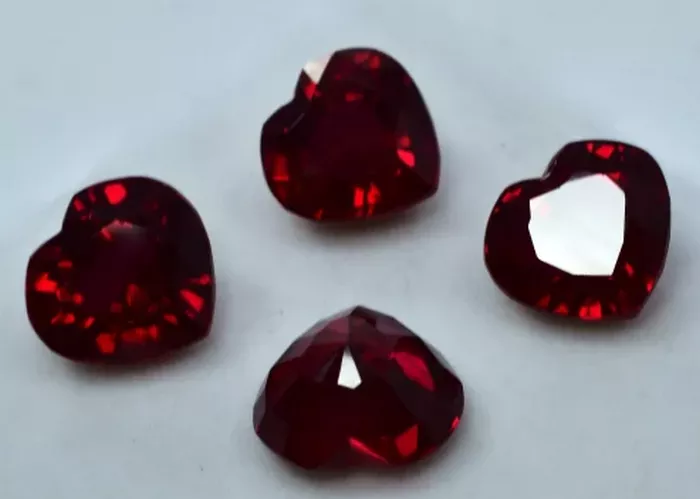Rubies, with their mesmerizing red hue and rarity, have captivated humanity for centuries. As one of the most valuable gemstones, their origin greatly influences their quality and value. Determining which country produces the best rubies involves examining a complex interplay of geological factors, mining practices, and market dynamics. In this comprehensive article, we delve into the key ruby-producing regions around the world, exploring their unique characteristics, historical significance, and current prominence in the global gemstone market.
Introduction to Rubies
Rubies are a variety of the mineral corundum, with their red coloration primarily caused by traces of chromium within the crystal structure. They are part of the elite category of precious gemstones, alongside diamonds, emeralds, and sapphires. The finest rubies exhibit a vivid red hue, often described as “pigeon’s blood,” combined with excellent clarity and transparency.
Historically, rubies have been mined and traded across various civilizations, from ancient Southeast Asia to medieval Europe. Today, they remain highly sought after for their beauty, durability (second only to diamonds), and cultural symbolism.
Geological Factors Influencing Ruby Quality
The quality of rubies is heavily influenced by geological factors present during their formation. Key considerations include:
Origin and Formation: Rubies form in metamorphic and igneous environments where high pressure and temperature conditions are conducive to the crystallization of corundum. The geological age of the deposit can also impact the gem’s quality, with older deposits potentially yielding more mature and stable crystals.
Trace Elements: Chromium is the primary coloring agent in rubies, but other trace elements such as iron and titanium can affect their color saturation and clarity. The presence of these elements varies depending on the geological context of the deposit.
Crystal Structure: The internal structure of rubies, including the presence of inclusions and the orientation of growth patterns, significantly influences their transparency and ability to reflect light.
Major Ruby-Producing Countries
1. Myanmar (Burma)
Myanmar has long been revered for producing some of the world’s finest rubies. The Mogok Valley in Upper Myanmar is particularly renowned for its deep red “pigeon’s blood” rubies, characterized by their intense color saturation and fluorescence under natural light. The region’s geological history, which includes ancient metamorphic formations and volcanic activity, has contributed to the exceptional quality of its rubies.
Mining Practices and Challenges
Despite its rich ruby deposits, Myanmar’s gemstone industry faces numerous challenges, including political instability, environmental concerns, and issues surrounding labor practices. The country’s ruby trade has been a subject of international scrutiny and sanctions due to its association with human rights abuses and conflict financing.
2. Thailand
Thailand has historically been a significant player in the global ruby market, particularly with rubies sourced from its Chanthaburi and Trat provinces. Thai rubies are known for their bright red to slightly purplish hues and good transparency. However, in recent decades, Thailand’s production has declined due to depletion of accessible deposits and competition from other countries.
Treatment and Enhancement
Many Thai rubies undergo heat treatment to improve their color and clarity. This industry practice is common globally and aims to bring out the best possible appearance in the gemstones before they reach the market.
3. Cambodia
Cambodia’s ruby deposits, primarily located in the Pailin region, produce rubies with a distinctive deep red color. These rubies are often darker in tone compared to those from Myanmar but are valued for their rich color saturation. Cambodia’s gemstone industry, including ruby mining, has grown significantly in recent years, attracting international interest and investment.
Economic Impact and Sustainability
The ruby mining industry in Cambodia has provided economic opportunities for local communities but also raises concerns about environmental sustainability and responsible mining practices. Efforts are underway to balance economic development with environmental conservation.
See Also: In Which Finger Gomed Should Be Worn for Female
4. Mozambique
Mozambique has emerged as a notable source of rubies in recent decades, particularly from its Montepuez region. These rubies often exhibit a vivid red color similar to those from Myanmar, with good transparency and clarity. Mozambique’s ruby deposits are associated with metamorphic rocks of the Mozambique Belt, which also hosts significant deposits of other gemstones and minerals.
Market Competition and Global Trade
Mozambique’s entry into the ruby market has added diversity to the supply chain, offering alternatives to traditionally dominant producers like Myanmar. The global trade in Mozambican rubies has expanded, driven by demand from jewelry manufacturers seeking ethically sourced gemstones.
Evaluating Ruby Quality
When assessing the quality of rubies from different countries, several factors come into play:
Color: The most important factor in ruby valuation is its color. A pure red hue with minimal secondary tones (such as purple or orange) is considered most desirable.
Clarity: Rubies should ideally have few internal flaws (inclusions) that affect transparency and brilliance.
Cut: A well-proportioned cut enhances a ruby’s brilliance and color depth, maximizing its visual appeal.
Carat Weight: Larger rubies are rarer and thus command higher prices per carat compared to smaller stones of similar quality.
Ethical and Environmental Considerations
The global ruby trade, like other gemstone industries, faces challenges related to ethical mining practices, environmental impact, and labor conditions. Consumers and industry stakeholders increasingly prioritize ethical sourcing and transparency in the supply chain, encouraging initiatives for responsible mining and fair labor practices.
Future Trends in Ruby Production
Looking ahead, the future of ruby production will likely be shaped by technological advancements in mining techniques, increasing demand for traceable and ethically sourced gemstones, and evolving consumer preferences for unique and high-quality jewelry pieces.
Conclusion
Determining which country produces the best rubies involves understanding the geological, economic, and ethical dimensions of the global gemstone trade. While Myanmar has traditionally been celebrated for its exceptional rubies, other countries like Thailand, Cambodia, and Mozambique are making significant contributions to the market with their own unique offerings. The choice of a “best” ruby ultimately depends on individual preferences for color, clarity, and ethical considerations. As the industry continues to evolve, embracing sustainability and ethical practices will be crucial in ensuring a vibrant future for ruby production worldwide.


